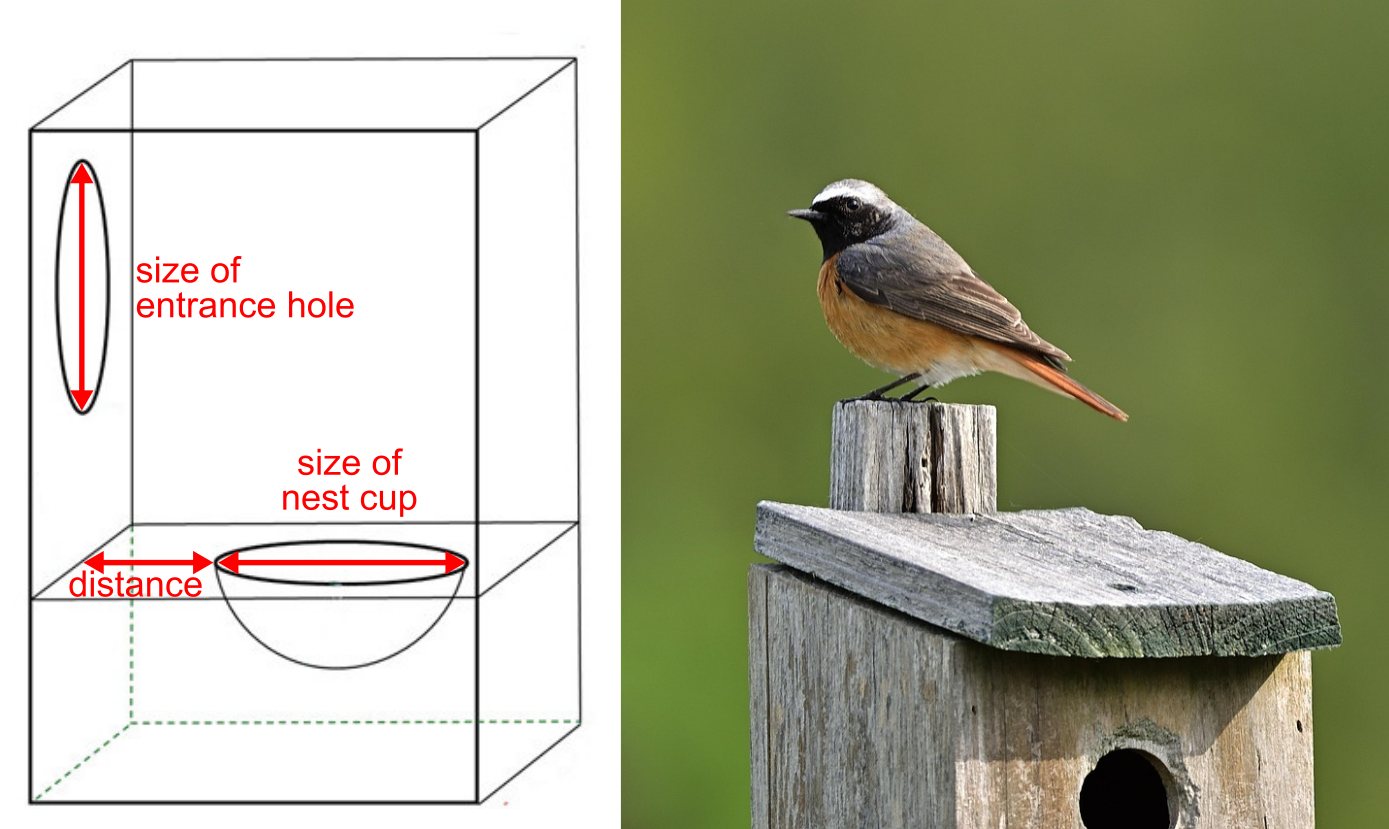The European cuckoo is more than eight times heavier than the Common redstart, a regular victim of cuckoos’ brood parasitism. Cuckoo chicks that hatched in redstart nests may push a redstart’s own eggs out of the nest to claim all parental care for themselves. However, redstarts can avoid being parasitized in the first place—here’s how.

In 291 out of 816 of the observed nest boxes of redstarts, cuckoos had tried to lay an egg. That is, 36% of all nests that the researchers monitored in their study sites in Finland. However, more than two out of three attempts were unsuccessful—the egg did not end up in the nest cup, but next to it, or even fell to the ground below the nest box. In their study1, published in March 2025 in the Journal of Avian Biology, the scientists describe what redstarts do to keep cuckoos and their eggs out of their nests.
1) Choosing nest boxes with small entrance holes
The smaller the entrance hole, the less likely it is that a female cuckoo will be able to enter a nest box to lay an egg. It’s that simple. In nest boxes with entrance holes smaller than 6 cm (2.36 in), cuckoos mostly didn’t even try to lay an egg. And redstarts take that into account: when choosing among free nest boxes, redstarts prefer those with small entrances.

2) Making the nest cups small
But what if all the nest boxes with small entrance holes are already occupied? Then, redstarts can still make their nest less appealing for cuckoos. The researchers found that cuckoos were less likely to attempt to lay an egg in the nest box, if the nest cup within the box was small. The smaller the nest cup, the more difficult it is to successfully place the egg within the cup. And indeed: redstarts in nest boxes with bigger entrance holes built smaller nest cups, making the nest less appealing for cuckoos and thereby reducing parasitism rates. Smart move!
3) Place the nest cup far from the entrance
But what if a cuckoo still attempts to lay an egg in the nest box? Then there is one more thing that may hamper their success: a nest cup positioned far from the entrance hole. Since even medium-sized entrance holes may be too small for a cuckoo to actually enter the nest box, the female may be forced to lay the egg from the entrance. This way, the egg won’t end up in the nest cup if that is positioned far back in the box. And eggs outside the nest cup won’t be incubated by the redstart.

What comes next?
We often see an evolutionary arms race in parasite-host interactions such as the one we looked at today. If the host evolves to become more successful in combating brood parasitism, the parasite may evolve new strategies to evade the host’s defenses.
Which makes me wonder: if cuckoos cannot lay eggs in nest boxes with small entrance holes, will they evolve to become smaller in the future?
Have a wonderful rest of the week! All the best,
P.S.: From now on, Beaks & Bones will be published every other week instead of weekly. I made this decision to maintain a healthy balance between the work on my PhD, the time spent with my family, and my own leisure time. This way, I also hope to be able to spend more time drawing and share more artwork with you in the future. Thank you all for reading, commenting, and liking. I can’t wait to continue this journey together with you.





I was wondering the same thing as I was reading this, Maja! Thanks so much for sharing this cool science.
Interesting as always!